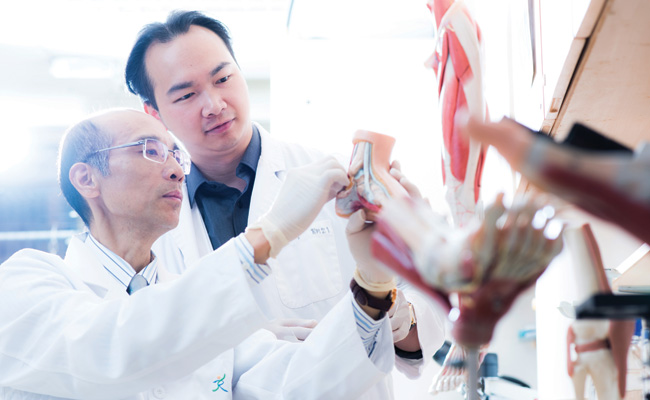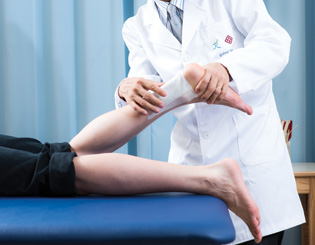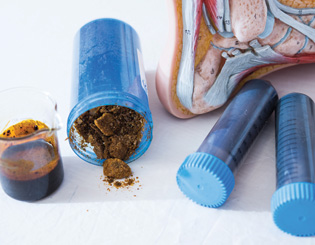
Prof. Gabriel Ng (left) and research team member
A PolyU researcher is investigating the effectiveness of nanomized Chinese herbal plaster in repairing injured tendons.
Consider a professional athlete who always pays attention to proper posture and body protection to avoid injury but still suffers heel pain. He is diagnosed with Achilles tendinosis, a degeneration of the tendon linking the heel bone to the calf muscle. The overuse and on-going stress on the tendon lead to the loss of its organized structure and the development of microscopic tears, resulting in constant pain. Among various non-surgical treatments, a nanomized Chinese herbal remedy might be able to cure such injured tissues more efficiently, thus offering new hope to this patient.
With a strong research background in connective tissue injury and repair, sports physiotherapy and patellofemoral joint pain and rehabilitation, Prof. Gabriel Ng, Chair Professor and Head of the Department of Rehabilitation Sciences, is conducting two studies for three years on the effectiveness of nanomized Chinese herbal medicine in treating mega tendon degeneration, in collaboration with Hong Kong University of Science and Technology, The Chinese University of Hong Kong and Hong Kong Baptist University.
Having first incorporated the nano-technology into a Chinese herbal formula suitable for topical application in the form of adhesive plaster, the research team applied the plaster to experimental animals and human subjects with damaged Achilles tendons to investigate the improvement of tissue biomechanical properties, functional performance and ultrastructural morphology. The preliminary results of the plaster's efficacy were positive.
Given the high permeability of nanomized Chinese herbal medicine into cells and the high retention of its active ingredients within those cells, this remedy offers the advantage of accelerating the rehabilitation process. Once its effectiveness is fully proven, this research will have a tremendous impact on the non-surgical treatment of soft tissue injury and future development of Chinese herbal medicine. ♦


